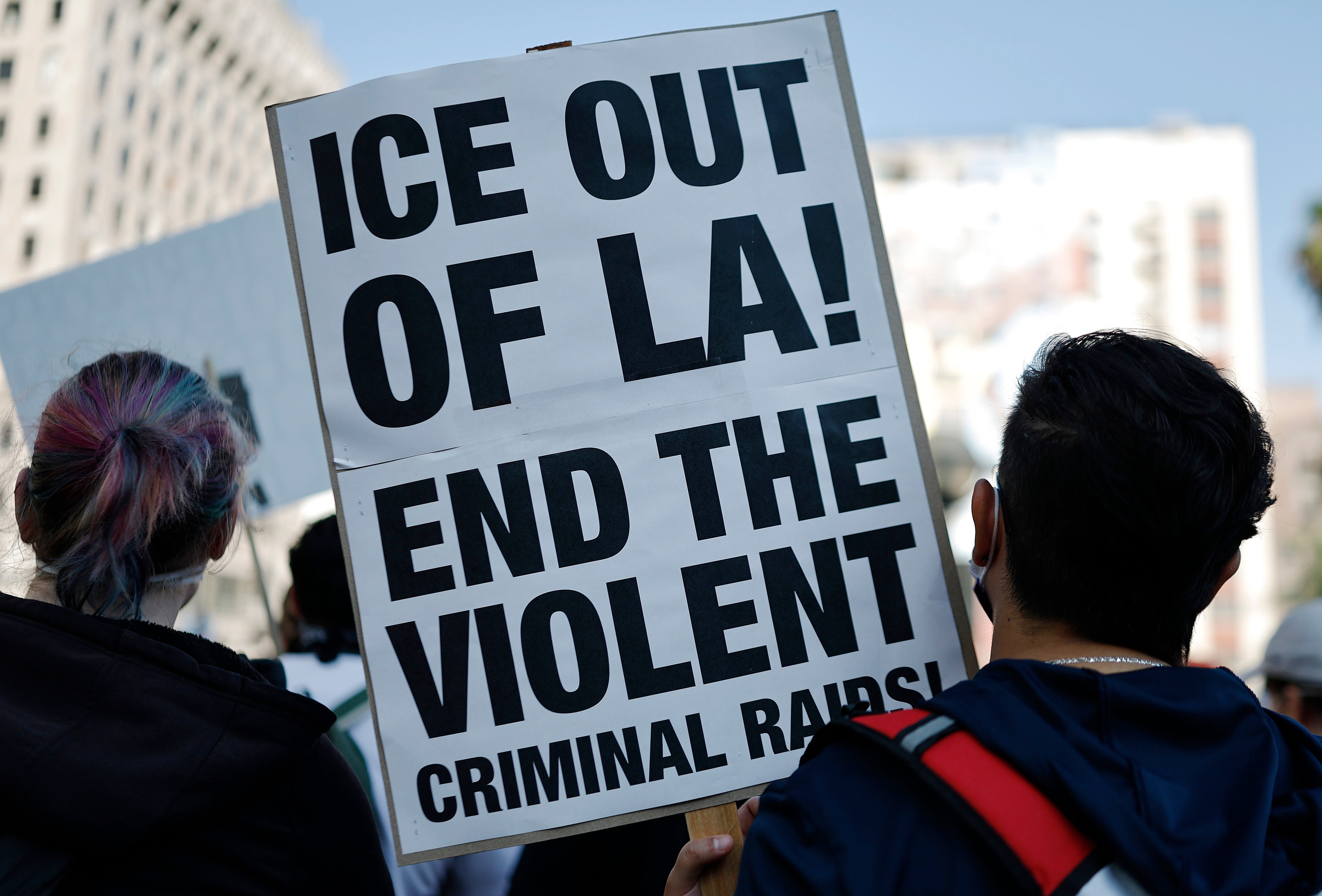Donald Trump’s deportation blitz began as soon as his second presidency did, with billions diverted into mass raids and Trump declaring: “We’re getting the bad, hard criminals out” — but that rhetoric doesn’t quite match the data.
The number of people without a criminal record being arrested by Immigration and Customs Enforcement agents and held in detention has jumped 800 percent since January, as officials face pressure to boost numbers, according to reports.
This enforcement drive has resulted in 51,302 people being imprisoned in ICE centers as of the start of June; marking the first time that detention centers held over 50,000 immigrants at once.
Less than one in three (30 percent) of these detainees are convicted criminals, with the remainder pending criminal charges or arrested for non-criminal immigration offenses, such as overstaying a visa or unauthorized entry to the the country.
The latest data is from June 1, published by Transactional Records Access Clearinghouse. Since January, when the Trump administration entered office, ICE has not published clear and official figures on arrests or deportations.

People held in immigration detention are either arrested by Customs and Border Protection, either at the US border or within 100 miles, or by ICE.
But among detained immigrants who have been arrested by ICE and not CBP, the number of non-criminal arrests has shot up.
Before the Trump administration entered office in mid-January, the proportion of non-criminal detainees arrested by ICE (meaning people without a criminal conviction or pending charges) was just 6 percent of all ICE arrests, 850 people.
This was largely in line with figures over Joe Biden’s presidency, where non-criminal ICE arrests rarely made up more than 10 percent of detainees.
Yet since President Trump’s inauguration on January 20, this figure has soared, with 7,781 detainees arrested by ICE without a criminal history or pending charges.
This makes up one in four (23 percent) of all detained immigrants arrested by ICE; an increase of over 800 percent, and the highest levels recorded since at least 2019, as far as records go back.
At the same time, just four in ten detainees who had been arrested by ICE were convicted criminals, latest data shows; the lowest level recorded, and a 20 percent drop proportionally from January.
This substantial shift in non-criminal immigration arrests comes as enforcement officials increasingly conduct raids at workplaces, a reversal of the Biden-era ban.
Meanwhile, ICE is facing ongoing pressure from the government to boost numbers; with Homeland Security secretary Kirsti Noem reportedly ordering targets of 3,000 arrests a day.
And just this week, Trump demanded ICE “expand efforts to detain and deport illegal Aliens” in Democratic-run cities, and reversed an order to protect farmworkers from raids just days earlier.
“The American People want our Cities, Schools, and Communities to be SAFE and FREE from Illegal Alien Crime, Conflict, and Chaos,” he wrote in a lengthy tirade on Truth Social.
Just 8% of ICE detainees have serious criminal records
The lack of transparency over ICE arrests and other statistics under the Trump administration has also made it harder to identify trends in immigration enforcement.
But internal ICE documents seen by CNN suggest that immigration enforcement has had little focus on violent criminals.
Just one in ten ICE detainees from October to May have been convicted of serious crimes — including murder, rape, assault or robbery, according to CNN.
Even among all detainees with a criminal conviction, who make up around a third of the 185,000 ICE detainees over this period, the vast majority, around 75 percent, are for non-serious crimes.
These non-serious crimes include traffic and other offenses, but are included under an umbrella label when ICE refers to targeting immigrants with a criminal conviction.
The Trump administration’s anti-immigrant rhetoric has centered around criminal convictions and gang affiliations, not least with the unprecedented deportation of around 245 Venezuelans to El Salvador over alleged links to the Tren de Aragua gang.
The increasing number of non-criminals being detained by ICE, in addition to the low prioritization for serious crimes (just 9 percent of all detainees), is a concern amid the wider push to ramp up immigration enforcement at all costs.
In fact, though deportation has been front-and-center of the Trump agenda, the numbers are not skyrocketing on the surface; and border patrol deportations are going down, since fewer migrants are attempting to cross into the US.
While the latter should be a positive sign for the Trump administration, it may make officials desperate to find higher deportation numbers to report – regardless of immigrants’ criminal histories.
“This push on numbers — exclusive of whether or not the job is being done right — is very concerning,” said Sarah Saldaña, former ICE director under Obama, told the New York Times.
“You’re going to have people who are being pushed to the limit, who in a rush may not get things right, including information on a person’s status.”


